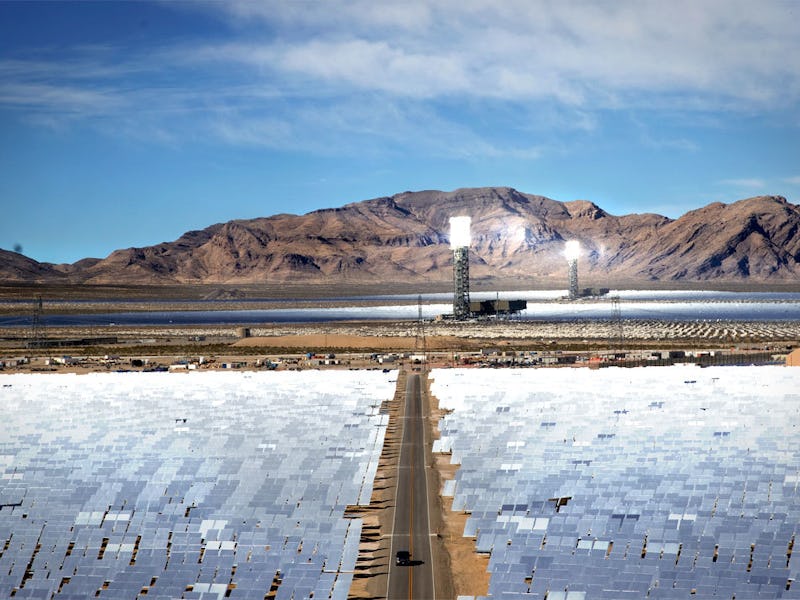A "Solar Bill of Rights" Is Gaining Steam in World's Fifth-Largest Economy
If there’s one thing Californians on both sides of the aisle can agree on, it’s that the sun is pretty neat.

If there’s one stance that unites Californians on both sides of the aisle, it’s that the sun is pretty neat (the virtues of avocados, roller skates, and neon also come to mind, but I may just be thinking of a Saved by the Bell episode). Regardless, based on a new bill rolling through their state senate, it’s increasingly clear that for residents of the world’s fifth-largest economy (suck it, U.K!), making it possible for everyone to be able to install their own clean energy is a shared priority for Golden State politicians in both major parties.
Several California state senators introduced a new bill they’re calling a “Solar Bill of Rights” last week, accompanied by a group of solar advocates as well as home and business owners.
The bipartisan bill SB-288, co-sponsored by Sen. Scott Wiener (D) and Sen. Jim Nielsen ( R ), calls for a standardized process for Californians to install solar energy panels and connect to the grid, and aims to protect and support those willing to generate and store their own energy.
Solar Bill of Rights: How it Could Work
Under SB-288, the Public Utilities Commission (PUC) and local publicly owned electric utilities would be responsible for establishing tariffs that “offer fair compensation for customer-sited energy storage systems that export electricity to the electrical grid.” In other words, import taxers would be re-structured or created to generate new revenue, which would then be used to, among other things, help compensate solar panel owners who send energy back to the grid.
The PUC would also be required to submit a yearly utilities report to the state senate that tracks interconnection requests. The bill’s final element is more of a suggestion — that the PUC and local electric utilities “consider” tariffs that would incentivize self-storage, a move that, the bill argues, “support grid reliability and community resiliency in the event of emergencies.”
And it’s here, at the intersection of “Let me do what I want” and “Do it for the common good,” that Sen. Wiener and Sen. Nielsen can meet and shake hands. Sen. Wiener represents San Francisco and has long been a vocal advocate for environmental innovations.
Floating solar panel array recently unveiled in Kelseyville, California.
Sen. Nielsen’s constituents include residents of Paradise, a community that was decimated this winter in the Camp Fire, the state’s deadliest wildfire in history. Together, the two senators seem able to agree on a few key facts: Their state has a lot of sun. That sun can turned into energy, and residents should be allowed — encouraged, even — to collect that energy. And in the face of another environmental disaster, it’s the state’s job to ensure survival, in any way possible.
Californian communities routinely rank as some of the sunniest cities in the U.S. — last year, San Diego enjoyed some 266 days of sun — and as such, the state is naturally a powerhouse in American solar energy.
But last month, PG&E, the state’s largest utility company, announced they would be filing for bankruptcy, unable to shoulder the more than $30 billion in potential liability costs they’re facing for their role in sparking fires, and in preparation have begun re-negotiating a number of green-energy Power purchase agreements (PPAs), worth tens of billions of dollars.
Still, there’s hope: In December, a bill requiring that all new homes feature solar panels was introduced; should that bill pass, it would take effect in 2020, with SB-288 following suit in 2021.